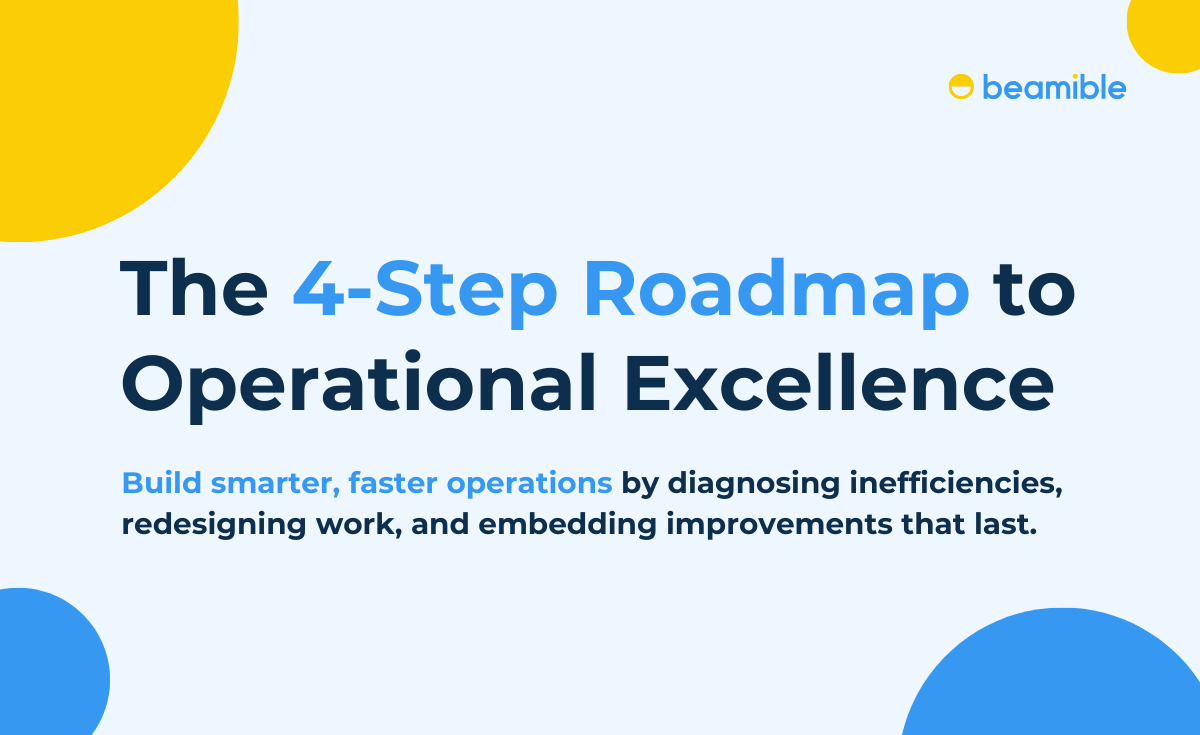Psychosocial safety addresses a vital aspect of workplace welfare that can be easily neglected—the mental and emotional well-being of employees.
Studies suggest that a favorable psychosocial climate at the workplace can help improve productivity, reduce absenteeism, and increase employee engagement levels.
But what is psychosocial safety and how can organizations strive to improve it?
We’re not only going to answer those questions here but also explore why psychosocial safety is essential to maintaining a productive and healthy workplace.
What is psychosocial safety?
Psychosocial safety refers to protecting employees’ psychological health from work conditions that harm mental wellness. Such work conditions are also referred to as psychosocial hazards.
Psychosocial hazards include a broad range of workplace issues, such as work-related stress, harassment at work, poor work management, tedious working hours, etc., among others. The concept of psychosocial safety recognizes the psychological health and safety of employees as being an integral part of occupational health and safety.
Acknowledging the concept can be a first step towards creating a supportive culture for organizational psychosocial safety, reflecting a business’ commitment, policies, and practices toward promoting employees’ psychological health and well-being.
What are psychosocial hazards?
Psychosocial hazards are any work environment aspects that pose a potential risk to employees’ psychological well-being. These hazards are usually linked to organizational and workplace management, as well as the economic contexts of work.
Here’s a list of several different types of psychosocial hazards:
Workplace stress
Workplace stress is mainly caused by job demands and pressures at a workplace that don’t match an employee’s knowledge, skills, or abilities. It challenges their ability to cope and process.
Examples include heavy workloads, long working hours, pressure to meet deadlines, complexity of tasks, and job insecurity.
Workplace harassment and violence
It may seem obvious saying that employee well-being suffers in the face of psychological or physical harm, yet more than one in five employees globally still suffer such experiences.
Examples of workplace harassment include bullying, humiliation, sexual harassment, as well as psychological and physical harm.
Poor work-life balance
The lack of work-life balance is a psychosocial hazard that can lead to stress and burnout. This can be the result of long hours, working through breaks, taking work home, not taking holidays, or being expected to be available for work outside of regular working hours.
Lack of work control
When employees feel they have little or no control over their work, they are likely to experience high levels of work stress and dissatisfaction, which is a serious psychosocial hazard
Factors that can impact this sense of control include access to decision-making opportunities, skill utilization, and the ability to influence the way work is organized and performed.
Job insecurity
Insecure working arrangements, including casual or temporary work, can create psychosocial hazards. Workers may feel anxious about their ability to improve their prospects, leading to stress and other issues.
Unhealthy organizational culture
Poor communication, low levels of support for professional development, lack of definitive organizational objectives, etc. can contribute to increased psychosocial risks.
Emotional demands
When employees are required to constantly manage their emotions as part of their job, it can cause stress. This phenomenon is common in jobs that involve interactions with clients, patients, or customers, particularly in circumstances where those individuals may be distressed, angry, or disappointed. This, in turn, can negatively affect long-term employee mental health.
Each of these hazards has the potential to cause harm to an employee’s psychological health and safety, resulting in conditions such as depression, anxiety, burnout, and stress-related disorders. Recognising these hazards and taking proactive steps to manage them can help create a safe and healthy work environment.
How to manage psychosocial risk
Psychosocial risk can be managed by identifying and assessing factors that could potentially harm the emotional well-being of employees and then taking steps to mitigate these risks.
Good psychosocial risk management helps maintain a healthy and productive work environment. Here’s a step-by-step guide to managing psychosocial risk:
Step 1. Risk identification: The first step toward managing psychosocial safety involves identifying the conditions in a workplace that could potentially cause psychological harm to employees.
This can be done through various methods, including employee surveys, one-on-one interviews, focus groups,observing work practices or by using technologyto monitor risks. Some common hazards to look out for include high workload, long working hours, harassment, poorly designed work roles, and poor working conditions.
Step 2. Risk assessment: Once potential risks are identified, it’s time to assess them to understand the impact and the level of risk they pose. This involves analyzing data related to sick leave, staff turnover, incidents of conflict, constant dips in performance, and employee complaints. It’s also crucial to consider how much harm each hazard can cause as well as its likelihood of occurring.
Step 3. Risk control: This step involves taking action to reduce the identified psychosocial risks. This includes taking the right measures to control the issues.
For instance, the management team can introduce a more flexible work culture for employees if their work-life balance is poor. Or perhaps some employees are embracing changes in their personal lives, such as parenthood, and may need support and counseling on how to manage work alongside their new parental responsibilities.
Controls should be tailored to the specific risks identified and should involve employee input wherever possible.
Step 4. Training and education: Educating employees about the psychological hazards, their risks, and their consequences raises awareness and helps create safer work environments. Rather than seeing it as a part of the process, senior management should include training and education in regular organizational activities.
Step 5. Monitoring and review: Once controls have been implemented, there should be frequent monitoring of the effectiveness of psychosocial risk management. This includes regular check-ins with employees, conducting surveys on employee satisfaction and well-being, or a review of the data used in the risk assessment process. If a control is not working as intended, it may need to be modified or replaced.
Step 6. Employee support programs: Implementing support programs can offer resources and counseling services to employees experiencing personal or work-related issues. These programs can provide critical support to employees dealing with stress, anxiety, depression, or other serious issues.
Managing psychosocial hazards and creating a psychosocially safe workplace is an ongoing process, not a one-off task. The work environment and the risks associated with it can change over time, so it’s important for senior management to be proactive and ensure continuous commitment to identifying, assessing, and controlling psychosocial hazards.
How to integrate psychosocial safety into a company’s culture
Managing psychosocial risk is just one part of the equation. The other is integrating psychosocial risk management into company work culture so that risks can be preempted well before they affect employees.
Here are a few measures that can foster a psychosocially safe work environment in the long term:
Leadership commitment: Leaders should display a commitment to mental well-being, both through their actions and their words. This includes actively promoting well-being initiatives, setting clear expectations for respectful behavior, and taking immediate steps to combat psychosocial hazards.
Leaders should also lead by example, incorporating measures into management practices and encouraging others to do the same.
Open communication: Establish clear and open channels of communication where employees feel comfortable voicing their concerns, expressing their feelings, and giving feedback. An open-door policy can help staff feel more comfortable discussing sensitive topics such as mental health and work-related stress. Regular check-ins or mental health surveys can also be helpful in promoting open dialogue.
Employee participation: Encourage staff to participate in decision-making, particularly around issues that affect their work and well-being. This could include decisions on workload management, work schedules, or the design of mental health programs. Employee participation can help ensure that initiatives are tailored to their needs and are more likely to be effective.
Better work design: Good work design involves finding that sweet spot between an employee’s capabilities and career goals, and an organization’s business objectives. Another aspect of work design is clearly outlining the responsibilities expected from a role and establishing a clear correspondence between these responsibilities and business objectives.
Work design platforms, such as Beamible, help employees gain visibility and insights into their responsibilities and how they align with strategically important tasks at the workplace. As a result, employees tend to find their work meaningful without being overburdened with responsibilities that lie outside their scope of work
Policies and procedures: Develop and implement policies and procedures to promote workplace safety, including a mental health policy, a work behavior policy, and a grievance procedure for dealing with issues of bullying and harassment. Policies should also be communicated clearly to all staff members and consistently enforced.
Employee assistance programs: Offer employee assistance programs for employees dealing with personal or work-related issues. Such programs may include counseling services, mental health resources, and other support services to help employees maintain their cognitive health.
Recognition and reward: Recognising and rewarding staff for their hard work can greatly contribute to a positive work environment. Keep in mind that recognition shouldn’t only refer to rewarding big achievements, but also appreciating the everyday efforts that keep the workplace running smoothly. Recognition can improve employee morale and job satisfaction, reducing stress and burnout.
Regular monitoring and review: Keep track of organizational psychological safety climate through regular surveys, feedback sessions, and reviews of policies. Modify strategies as required based on the feedback received.
Benefits of promoting psychosocial safety
Promoting psychosocial safety in the workplace comes with benefits that extend beyond occupational health and safety of employees. Here are some notable benefits:
Increased productivity: Employees who feel safe, respected, and valued tend to exhibit higher levels of productivity. A positive psychosocial climate promotes better focus, improved creativity, and enhanced collaboration, all of which drive productivity.
Reduced absenteeism: A sense of safety can significantly decrease rates of absenteeism. When employees feel emotionally and mentally healthy, they are less likely to take sick leave. In addition, a positive work environment can make staff more eager to come to work and contribute to their team.
Enhanced employee engagement: Good psychosocial health improves work engagement. Employees are more likely to show enthusiasm about their tasks and demonstrate a higher commitment to the organization.
Improved employee morale and job satisfaction: Psychologically healthy employees have improved morale and job satisfaction. This is due to the sense of being valued and respected, and the existence of a supportive and harmonious team environment.
Reduced staff turnover: When staff feel supported and experience less work-related stress, they are less likely to look for job opportunities elsewhere. As a result, organizations can save costs related to recruitment, training, and productivity loss.
Stronger talent attraction: Organizations that provide a safe environment to their people are more attractive to top talent. A reputation for valuing employee well-being can give a competitive edge in attracting highly skilled professionals.
Enhanced company reputation: Commitment to psychosocial health reflects positively on an organization’s brand and reputation. A strong reputation can lead to numerous benefits, including attracting better business opportunities, partners, and customers.
Legal compliance: In many jurisdictions, employers have a legal responsibility to provide a safe and healthy work environment, which includes managing psychosocial risks. By promoting worker psychological health, companies ensure legal compliance and avoid potential fines or lawsuits.
Healthier employees: A positive psychosocial safety climate results in healthier employees. By reducing stress, preventing psychological health problems, and promoting healthier work habits, teams can enjoy better physical and mental wellness.
Final Thoughts
The importance of psychosocial safety in the workplace cannot be overstated. By understanding psychosocial hazards, implementing comprehensive risk management strategies, and promoting a culture of psychosocial safety, organizations can significantly improve performance while ensuring the well-being of their most valuable asset—employees.
However, given the complex and multifaceted nature of the tasks involved in psychosocial risk management, HR managers can find themselves stretched to capacity trying to keep track of everything that goes into efficiently managing these risks.
This is where Beamible comes in.
Beamible not just automates the processes involved in efficient psychosocial risk management, it also provides visibility to all levels of an organization into work loads, priorities, and work roles. Its bottom-up design means that it isn’t just managers and HR teams that lead risk management efforts—employees also gain autonomy in effectively understanding, communicating, managing, and eventually mitigating psychosocial risk factors.
Want to know more about how Beamible achieves this? Have a discussion with the Beamible team.





